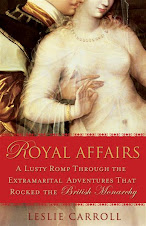The Magna Carta curbed the power of the king and established the rights of the English people. And the U.S. Constitution includes ideas and phrases taken almost directly from the charter, which rebellious barons forced their oppressive King John to sign in 1215.
Edward I
However, the Magna Carta was ratified and reissued with each monarch who succeeded John. It was enacted as law in 1297 by the British parliament when it was reissued by King Edward I, nicknamed by his subjects, "The lawgiver." The 1297 document is considered the most definitive (and therefore valuable) version because that was the text that made it into the English statute books.
The medieval vellum manuscript was bought at auction by the founder of a private equity firm, David Rubenstein. We applaud him, because he plans to keep it where it has been on display at the National Archives and Records Administration in Washington D.C.
David Rubenstein
Now that's what I call equity.
+for+blog+header+copy.jpg)

.jpg)
.jpg)





4 comments:
I'm happy to hear it is going to be made available to the public.
Me, too! (See, I promised, I'd follow up!) I don't even know what equity investment groups do, but I'm very glad that Mr. Rubenstein is keeping it where it is.
Leave it to one of "our" guys to assure that the Magna Carta stays in the U.S. for all to observe, enjoy and learn from.
Am fascinated by your remarkable knowledge of history. Love your blog entries, keep them coming. Am looking forward to reading 'ALL FOR LOVE" and "ROYAL AFFAIRS".
Signed LCGMOM
Thanks, "Mom"!
The next time you find yourself in Washington D.C., it's really worth a trip to the National Archives. Seeing the actual copies of the Declaration of Independence, the U.S. Constitution -- and the Magna Carta, will put a lump in your throat.
Maybe we can find a way to contact Mr. Rubenstein and thank him for preserving this treasure for the general public.
Post a Comment